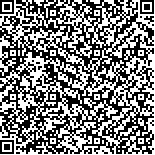| 李慧慧,梁 斐,曾 剑.ⅠB~ⅢA期可切除非小细胞肺癌辅助化疗后序贯阿替利珠单抗对比最佳支持治疗:IMpower010研究解读[J].肿瘤学杂志,2022,28(12):1052-1062. |
| ⅠB~ⅢA期可切除非小细胞肺癌辅助化疗后序贯阿替利珠单抗对比最佳支持治疗:IMpower010研究解读 |
| Efficacy and Safety of Sequential Atezolizumab versus Best Supportive Care in Patients with Stage ⅠB~ⅢA Resectable Non-small Cell Lung Cancer after Adjuvant Chemotherapy: Interpretation of Data from the IMpower010 Study |
| 投稿时间:2022-12-12 |
| DOI:10.11735/j.issn.1671-170X.2022.12.B014 |
|
 |
| 中文关键词: 非小细胞肺癌 阿替利珠单抗 辅助免疫治疗 无病生存率 |
| 英文关键词:non-small cell lung cancer atezolizumab adjuvant immunotherapy disease-free survival |
| 基金项目: |
|
| 摘要点击次数: 1006 |
| 全文下载次数: 472 |
| 中文摘要: |
| 摘 要:IMpower010是一项随机、多中心、开放标签的Ⅲ期研究,该研究比较阿替利珠单抗和最佳支持治疗(best supportive care,BSC)对辅助化疗后完全切除的ⅠB~ⅢA期非小细胞肺癌(non-small cell lung cancer,NSCLC)的疗效和安全性。主要研究终点是无病生存率(disease-free survival,DFS),次要疗效终点为意向治疗(intention to treat analysis,ITT)人群的总生存率(overall survival,OS)和安全性结局,根据程序性死亡配体-1(programmed death ligand-1,PD-L1)肿瘤细胞表达(tumor cell,TC)< 1%、1%~49%和≥50%进行分层。结果显示,PD-L1 TC≥1% Ⅱ~ⅢA期患者中,阿替利珠单抗治疗对比BSC,2年DFS率为74.8% vs 61.0%,3年DFS率为60.0% vs 48.2%,中位随访32.8个月的DFS显著延长,分别为尚未达到 vs 35.3个月(DFS:HR=0.66,95%CI:0.50~0.88)。所有随机化Ⅱ~ⅢA期人群亚组分析中阿替利珠单抗组DFS优于BSC组,尤其是在PD-L1 TC≥50%患者中观察到最大程度的DFS获益(HR=0.43,95%CI:0.27~0.68),2年DFS为87.1% vs 61.2%,3年DFS为73.8% vs 48.6%。在安全性方面,两组的3级或4级不良事件发生率相似,阿替利珠单抗组和BSC组分别为22%(108/495)和12%(57/495)。基于该项研究,阿替利珠单抗在多个国家被批准用于完全切除的、基于铂类化疗的PD-L1 TC≥1% Ⅱ~ⅢA期NSCLC患者的辅助免疫治疗。 |
| 英文摘要: |
| Abstract: IMpower010 is a randomized, multicenter, open-label phase Ⅲ study comparing the efficacy and safety of atezolizumab and best supportive care(BSC) in completely resected stage ⅠB~ⅢA non-small cell lung cancer(NSCLC) after adjuvant chemotherapy. The primary study endpoint was disease-free survival(DFS), and the secondary efficacy endpoints were overall survival(OS) and safety outcomes in the intention to treat analysis(ITT) population, based on programmed death ligand-1(PD-L1) tumor cell expression(TC) <1%, 1%~49% and ≥50%. The data showed that in patients with PD-L1 TC ≥1% stage Ⅱ~ⅢA, adjuvant atezolizumab treatment versus BSC resulted in a 2-year DFS of 74.8% vs 61.0% and a 3-year DFS of 60.0% vs 48.2%, with a significantly longer median follow-up DFS of 32.8 months, not yet achieved vs 35.3 months, respectively(DFS: HR=0.66, 95%CI: 0.50~0.88). DFS was better in the atezolizumab group than in the BSC group in all randomized Ⅱ~ⅢA population subgroup analyses, with the greatest DFS benefit observed particularly in patients with PD-L1 TC ≥50%(HR=0.43, 95%CI: 0.27~0.68), with 2-year DFS of 87.1% vs 61.2% and 3-year DFS of 73.8% vs 48.6%. In terms of safety, the incidence of grade 3 or 4 adverse events was similar in both groups, with 22%(108/495) and 12%(57/495) in the atezolizumab and BSC groups. Based on this study, atezolizumab is approved in several countries for the adjuvant immunotherapy in patients with fully resected PD-L1 TC ≥1% stage Ⅱ~ⅢA NSCLC after platinum-based chemotherapy. |
|
在线阅读
查看全文 查看/发表评论 下载PDF阅读器 |